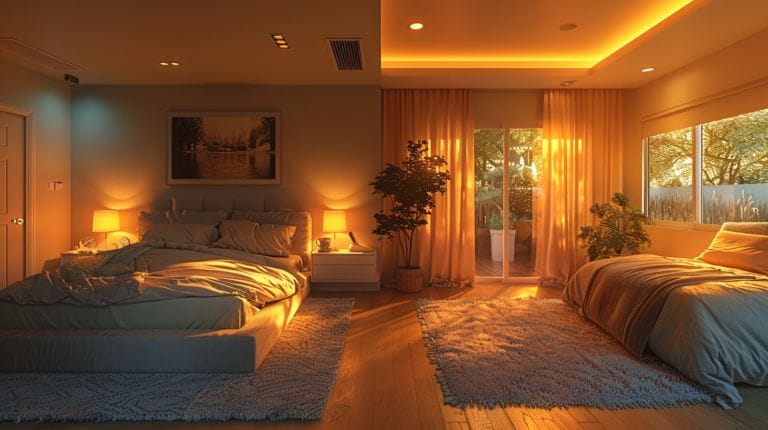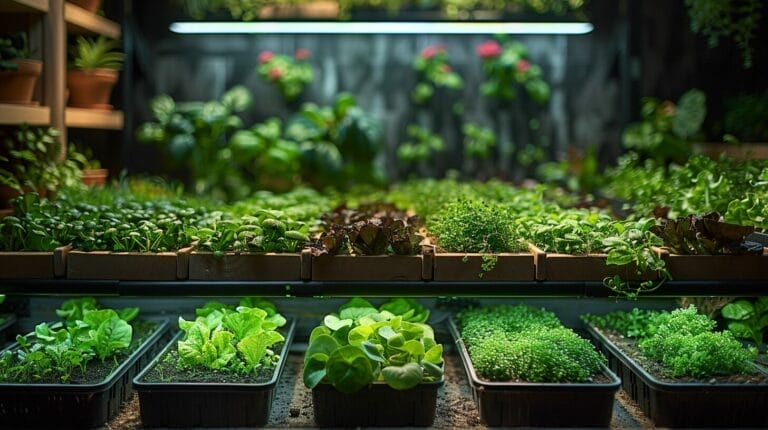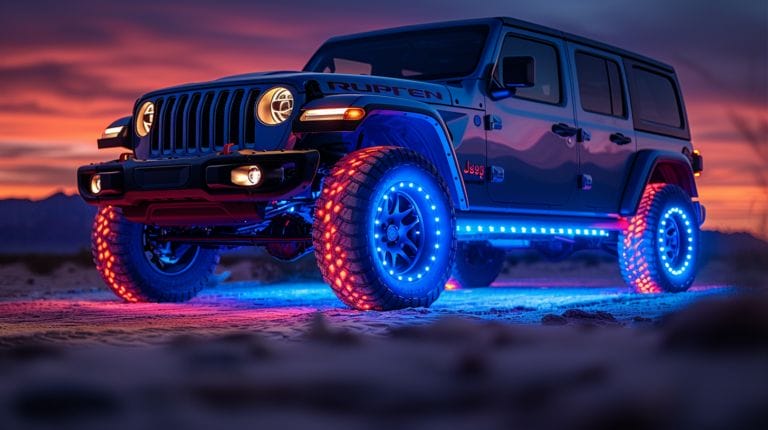How Many Watts Does a Light Bulb Use Per Hour? Find Out
When we think about our household energy usage, light bulbs are often overlooked, yet they can have a substantial impact on our electricity bills. Let’s consider how many watts a light bulb uses per hour. The wattage rating on the bulb gives us a straightforward idea—like a 60-watt bulb consuming 60 watts of electricity each hour. But what does that mean for our energy consumption and costs?
By multiplying this by the hours of usage, we can start to gauge the impact. However, understanding kilowatt-hours and exploring cost-effective alternatives is key. Shall we explore further?
Key Takeaways
- A light bulb’s wattage rating indicates its power consumption per hour.
- A 60-watt bulb uses 60 watts of electricity every hour.
- Energy-efficient bulbs like LEDs (6-10 watts) and CFLs (9-15 watts) use less power than incandescent bulbs (40-100 watts).
- Wattage times hours of use gives total watt-hours; convert to kilowatt-hours for electricity cost calculation.
- Switching to lower wattage, energy-efficient bulbs reduces electricity consumption and costs.
Understanding Light Bulb Wattage and Its Impact on Electricity Usage

When it comes to household energy usage, light bulbs might not be the first thing that comes to mind. However, they can significantly impact our electricity bills. By understanding the wattage of light bulbs and how it translates into energy consumption, we can make cost-effective decisions.
Different types of light bulbs—such as incandescent, Compact Fluorescent Lamps (CFLs), and Light Emitting Diodes (LEDs)—have varying wattages and thus, different energy efficiencies. For instance, incandescent bulbs, known for their higher wattage, typically range from 40 to 100 watts. In contrast, CFLs and LEDs use only 9-15 watts and 6-10 watts respectively to provide the same brightness as a 60-watt incandescent bulb.
The type of light bulb we choose can significantly impact our overall electricity consumption, and consequently, our electricity bills.
Calculating How Many Watts Does a Light Bulb Use Per Hour

To calculate the energy consumption of a light bulb, we just need to look at its wattage rating. Let’s take a 60W bulb as an example:
- Identify the Wattage: A 60W bulb uses 60 watts of power every hour.
- Daily Usage Calculation: If the bulb is on for 5 hours a day, it consumes 60W x 5 hours = 300 watt-hours daily.
- Energy Conversion: To convert this to kilowatt-hours (kWh), we divide by 1,000. So, 300 watt-hours equals 0.3 kWh.
Cost Analysis: How Much Does It Cost to Run a Light Bulb for an Hour?

The cost of running a light bulb for an hour depends on the cost per kilowatt-hour (kWh). According to the Energy Information Administration, the average cost of electricity in the U.S. is about 13 cents per kWh.
So, a 60-watt bulb uses 0.06 kilowatts per hour. Multiplying 0.06 kWh by the cost per kilowatt-hour (13 cents), we find that it costs about 0.78 cents per hour to run a 60-watt bulb.
However, by choosing energy-efficient bulbs like LEDs that use only 10 watts (0.01 kWh), we can reduce the cost to just 0.13 cents per hour. This shows that choosing energy-efficient options can lead to substantial savings.
Solar as an Alternative: Reducing Electricity Consumption with Solar-Powered Lighting

Switching to solar-powered lighting can drastically cut down on electricity consumption and costs. By harnessing the power of the sun, we not only reduce our reliance on traditional energy sources but also contribute to a greener planet. Solar-powered lighting is a compelling alternative for those of us who crave innovation and sustainability.
Let’s break down the benefits:
- Cost Savings: Solar lighting systems eliminate the need to pay for electricity, leading to significant long-term savings. You’ll see a reduction in your electricity bills almost immediately.
- Reduced Electricity Consumption: With solar-powered lighting, our homes and businesses consume less grid electricity. This reduction lowers the overall demand on power plants, contributing to a more stable and sustainable energy system.
- Environmental Benefits: Solar lighting reduces our carbon footprint, as it generates power without emitting greenhouse gases. This shift helps combat climate change and promotes cleaner air.
Embracing solar-powered lighting isn’t just about cost-efficiency; it’s about making a conscious choice to invest in the future. By adopting this alternative, we can enjoy both the practical and environmental benefits while paving the way for a more sustainable world.
Key Takeaways and Tips to Reduce the Cost of Running Light Bulbs

Here are some practical steps to reduce the cost of running light bulbs:
- Switch to energy-efficient bulbs like LEDs or CFLs.
- Install dimmer switches to adjust the brightness of lights and lower electricity usage.
- Use motion sensors to ensure lights are only on when necessary.
- Conduct an energy audit to identify areas of energy waste.
- Use smart home technology to optimize light usage.
By adopting these measures, we can drastically cut down on energy consumption and reduce our electricity bills.
Conclusion
To sum up, by understanding light bulb wattage and calculating our usage, we can better manage our electricity costs.
Knowing how many watts a bulb uses per hour and converting it to kilowatt-hours helps us see the big picture.
Exploring alternatives like solar-powered lighting can greatly reduce our energy consumption.
Let’s be mindful of our choices and take simple steps to reduce the cost of running our light bulbs. It’s easier than we think!.
Frequently Asked Questions
How many watts does a light bulb use per hour?
The amount of watts a light bulb uses per hour depends on the type of bulb. LED light bulbs typically use between 2 and 10 watts, while incandescent bulbs use between 60 and 100 watts.
How many kilowatt-hours of electricity do light bulbs use per month?
On average, if you use a standard light bulb for 3 hours per day, it would use about 30 kilowatt-hours (kWh) of electricity per month.
How much energy does a light bulb consume per year?
If a light bulb uses 30 kWh per month, it would consume around 360 kWh per year.
How much does it cost to use a light bulb per month?
The cost of using a light bulb per month depends on the energy rate in your area, but on average, a 10-watt LED bulb used for 3 hours per day will cost around $1-$2 per month.
What is the best way to reduce your home’s energy consumption related to light bulbs?
To reduce your home’s energy consumption related to light bulbs, you can:
- Switch to LED bulbs: LED bulbs are more energy-efficient and last longer than incandescent bulbs.
- Use natural light: Take advantage of natural daylight whenever possible.
- Turn off lights when not in use: Develop habits to turn off lights in empty rooms to save energy.







